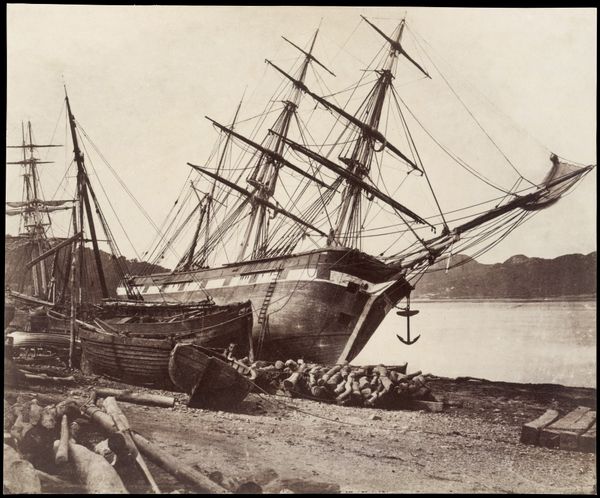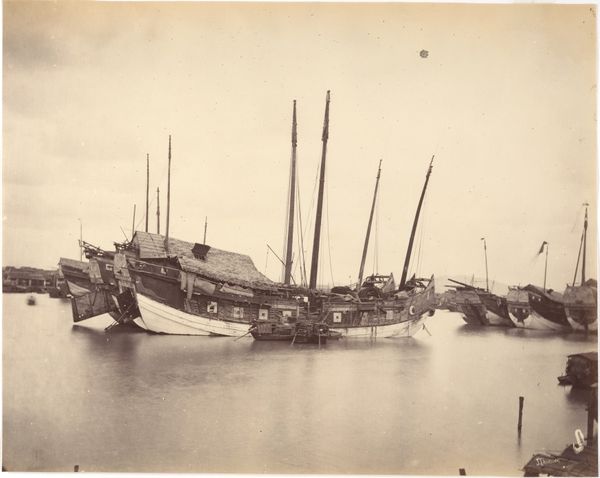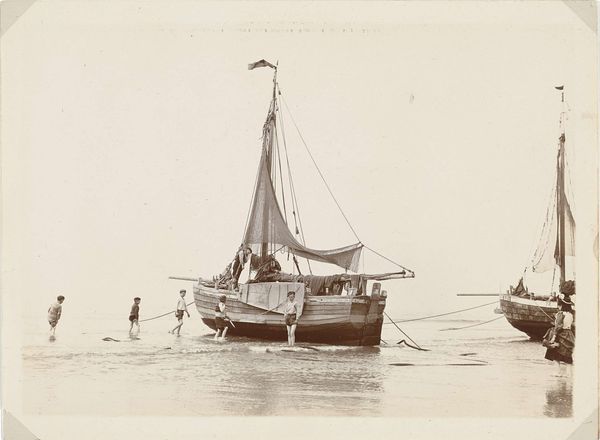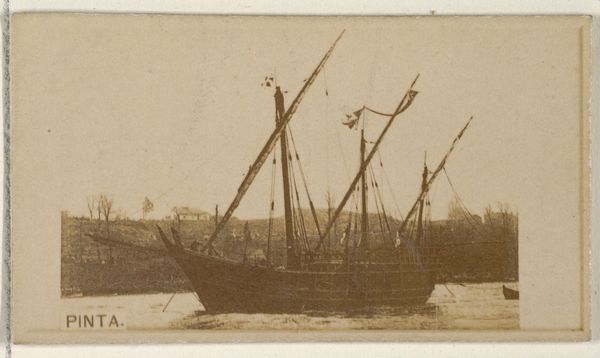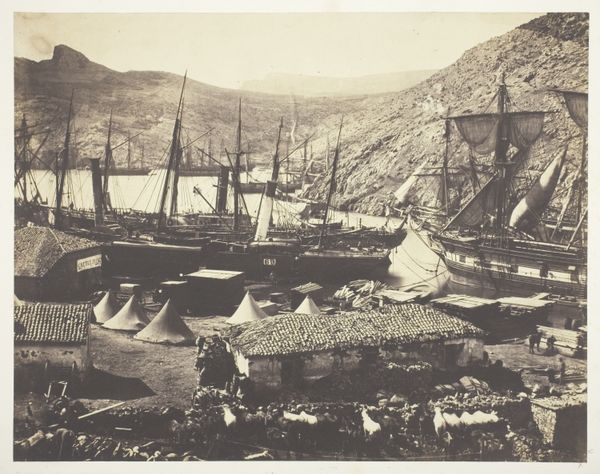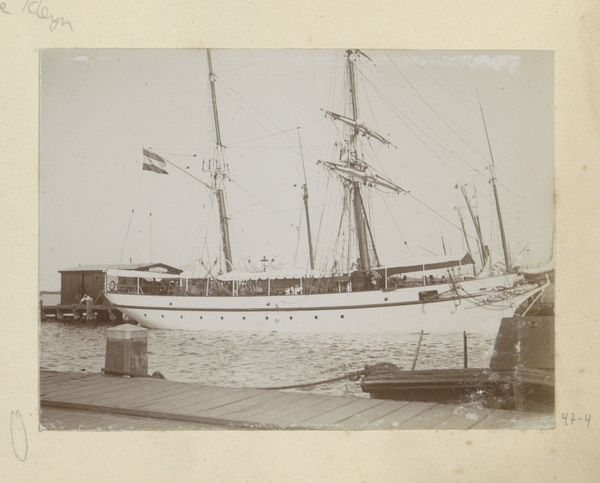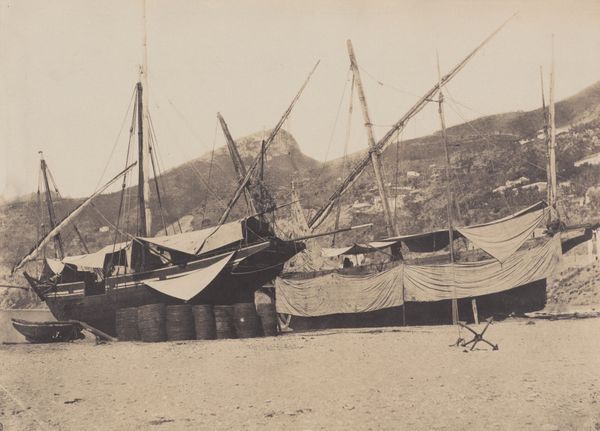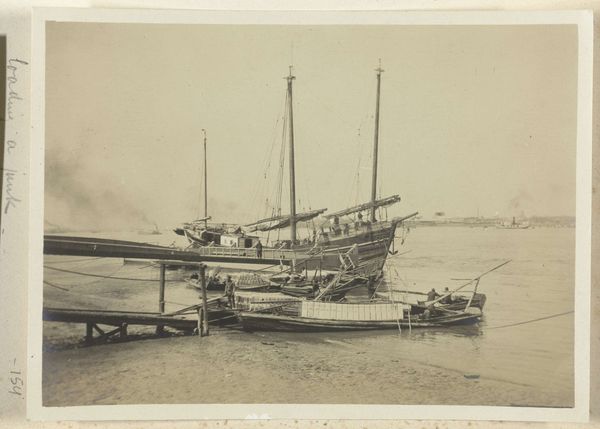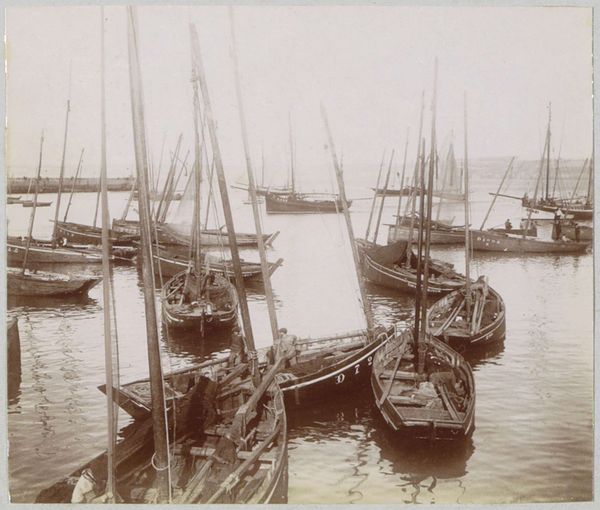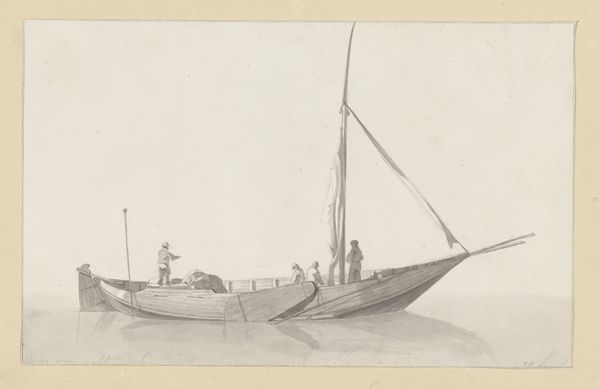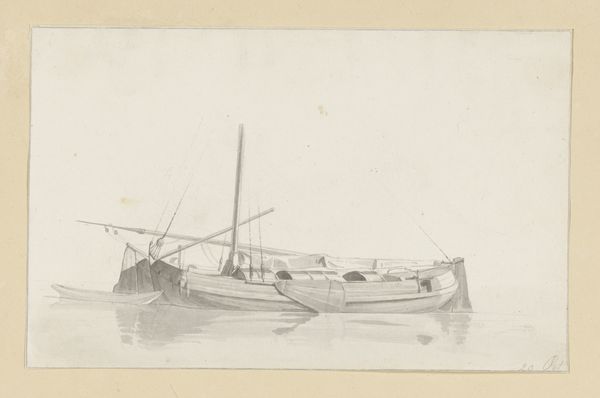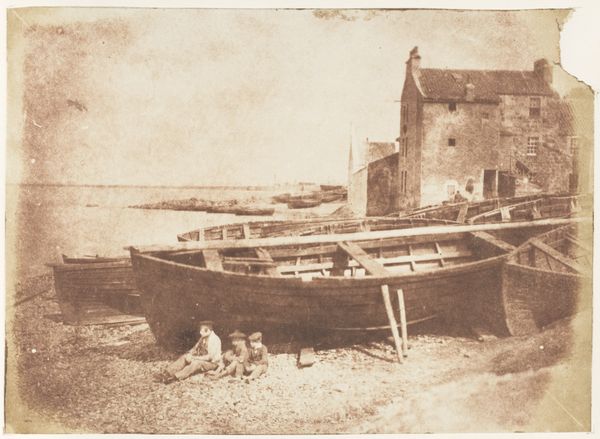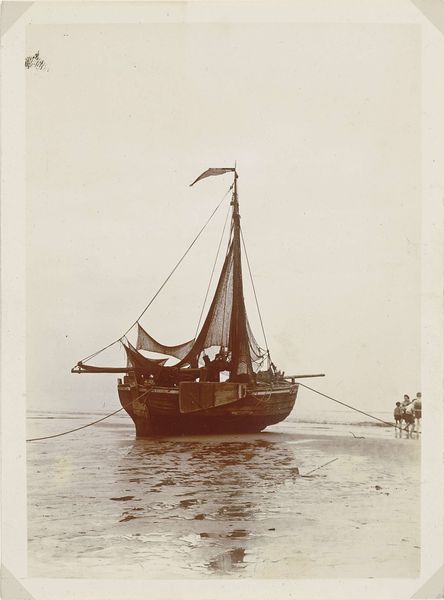
print, photography, albumen-print
#
water colours
# print
#
landscape
#
photography
#
watercolor
#
albumen-print
#
realism
Dimensions: image/sheet: 17.1 × 22.3 cm (6 3/4 × 8 3/4 in.) mount: 26.3 × 28.3 cm (10 3/8 × 11 1/8 in.)
Copyright: National Gallery of Art: CC0 1.0
Editor: This albumen print, "Oyster Boats" by Hugh Owen, dating from after 1855, captures two disused boats on a shingle beach. There’s a stillness to it, almost mournful. What social stories might it tell? Curator: It's tempting to romanticize scenes of boats at rest, but images like this were often tied to broader issues of labor, economics, and coastal communities. Consider the decline of oyster harvesting in many regions during the 19th century due to overfishing and pollution. How might this image reflect anxieties about the changing socio-economic landscape for working-class families? Editor: So, the boats aren't just boats; they represent the livelihoods that are perhaps being lost? The human element is very palpable despite the absence of human figures in the image. Curator: Precisely. Photography during this period served not only as a means of documentation, capturing 'objective' reality, but also played a significant role in shaping public perception. Think about how these images might be circulated, influencing opinions on environmental policies, fishing rights, or even poverty relief. Editor: That's fascinating! I hadn't considered the power these seemingly simple images held in shaping public discourse. It makes you wonder about the photographer’s intentions as well, what motivated Owen to focus on these particular boats? Curator: Exactly. And it also prompts a discussion of the collecting habits of museums themselves - why this print? Why now? What values are being ascribed and preserved? Editor: I'll certainly view such images with more awareness from now on, recognizing the deeper societal currents they capture. Thanks, that’s very insightful. Curator: And thanks to you as well! It’s these critical questions which breathe new life into historical documents.
Comments
No comments
Be the first to comment and join the conversation on the ultimate creative platform.
